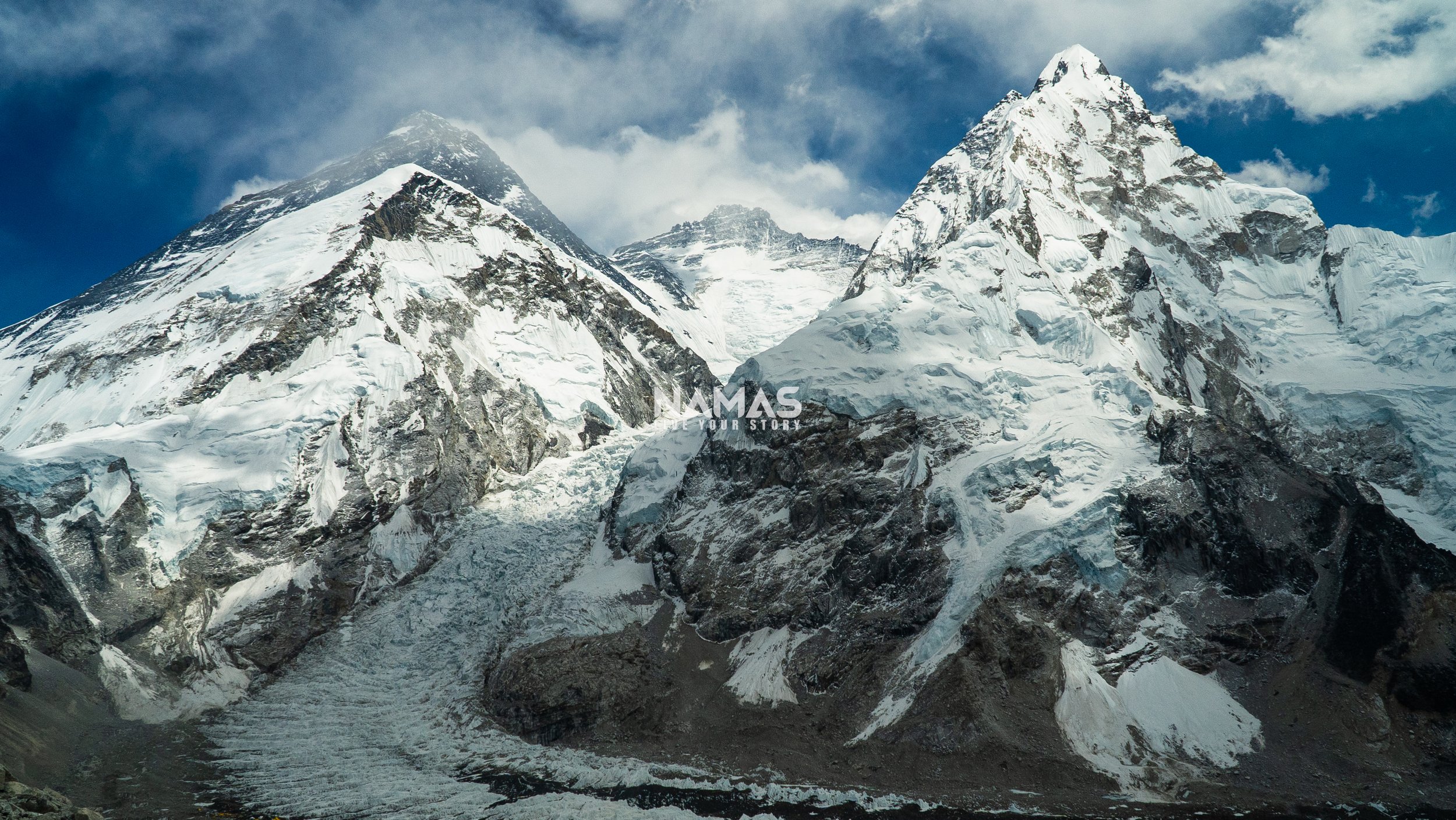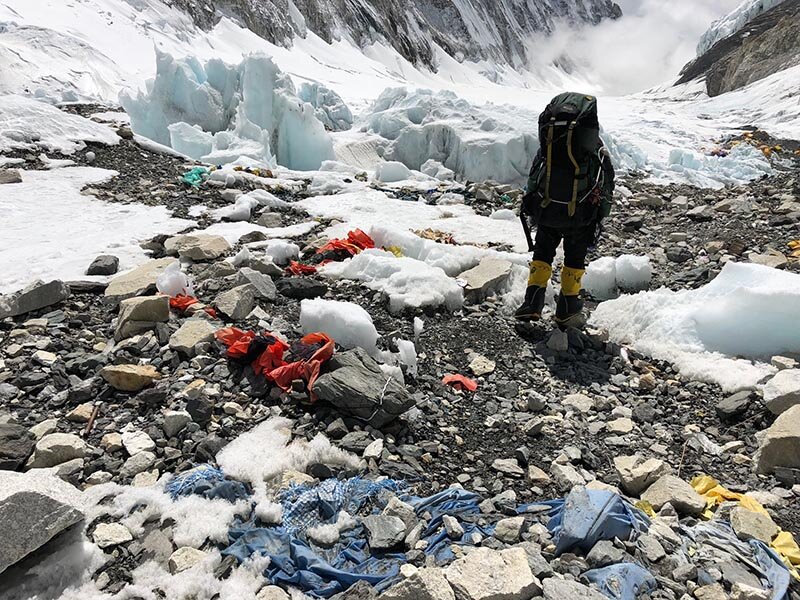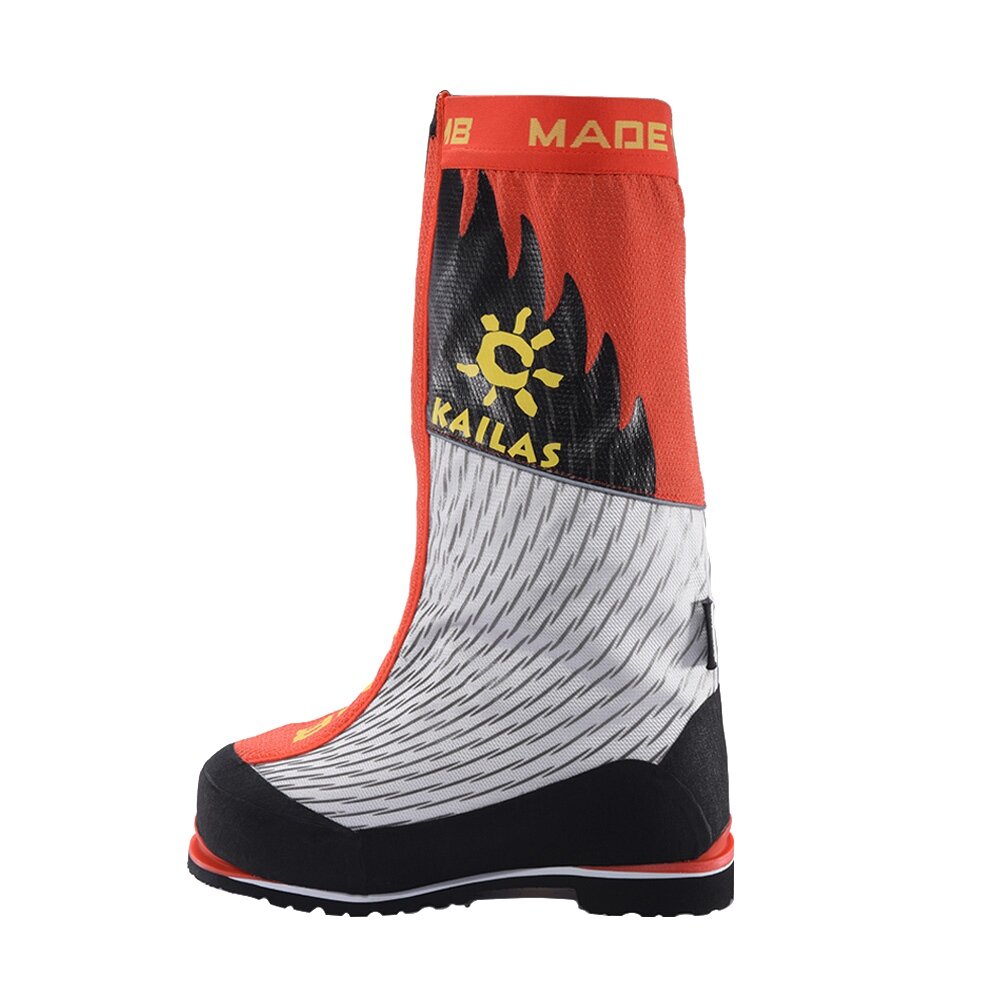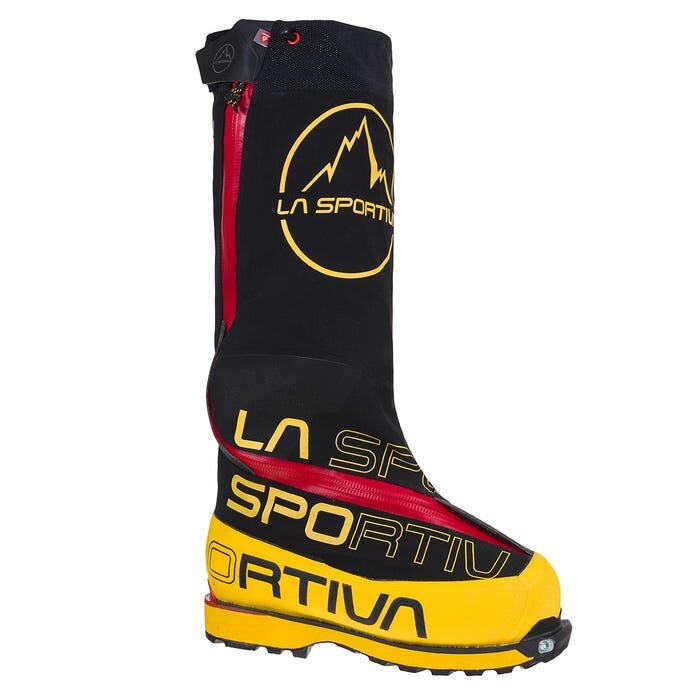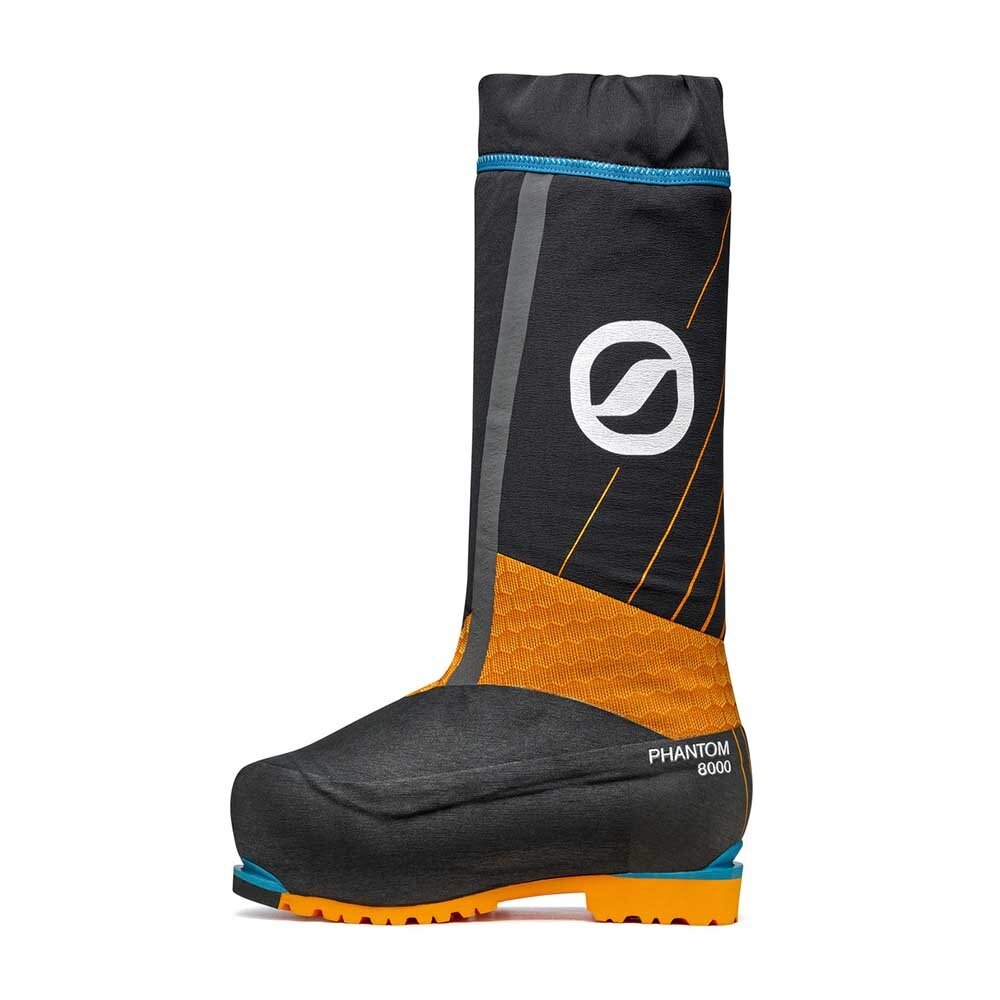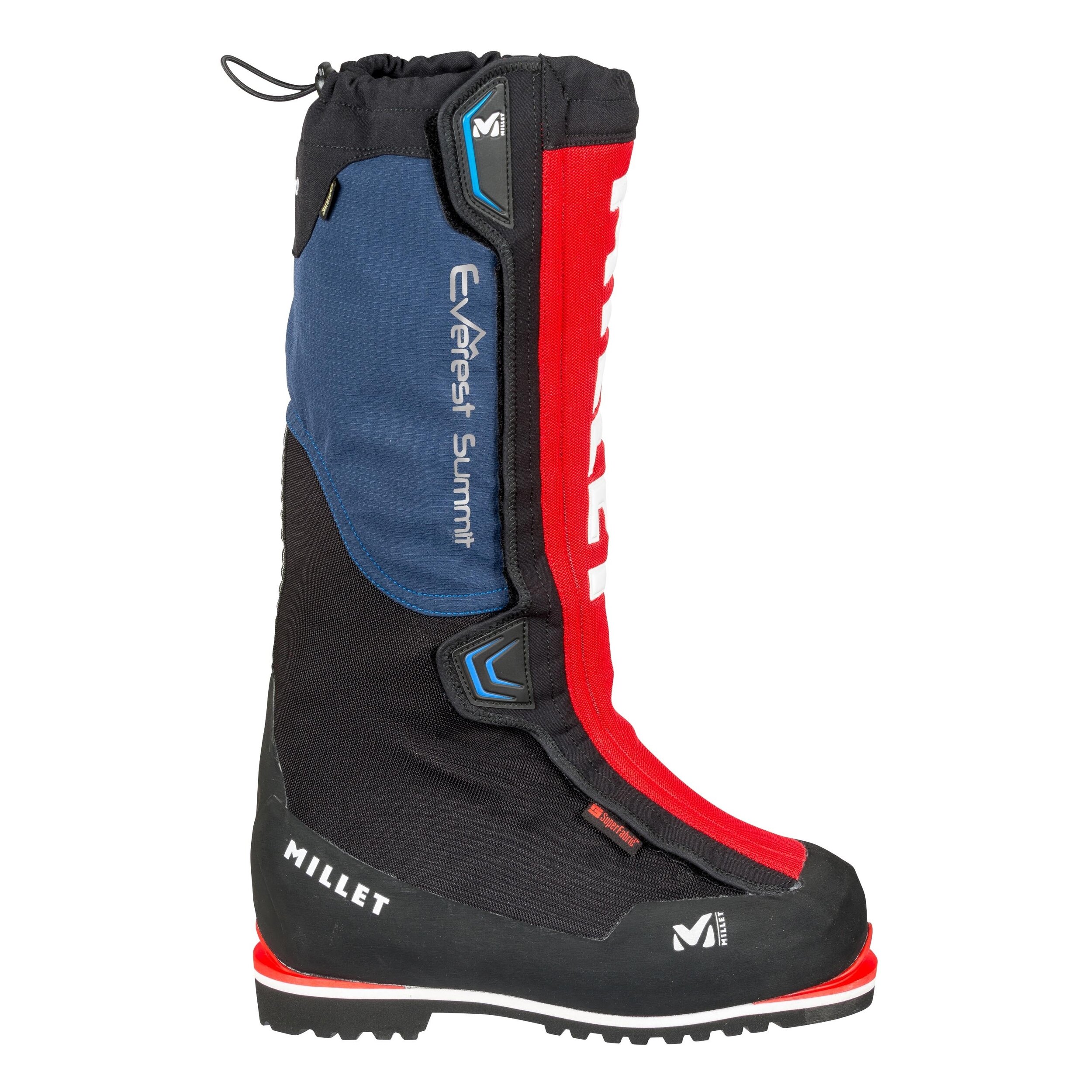Everything you need to know about MT. Everest 8848M Expedition
Note - Mt. Everest is officially a little higher. 8848.86M / 29,031.69FT (2020 new measurement)
1. When is the best time to climb Mt. Everest?
Spring (April-May) is the best time to climb Everest. All major commercial expeditions are organised during spring.
2. How much does Mt. Everest expedition cost? What does it include? How is Namas operating the expedition differently?
With our team, Namas Adventure team, your Everest expedition costs (website - click here). We provide premium high-quality all-inclusive peak climbing services. 🚁 Helicopter services to Lukla and rest day rotations BC - Namche Bazaar - BC and return to Lukla after your summit. Our team’s focus is your safety, successful summit, experiencing the local culture, and having fun. As a company, we are focused on our core values of being a responsible, ethical, and sustainable mountain adventure brand. Climbers do not have to worry about anything with our team and totally focus on their climbing holidays and fun times ahead.
List of what’s included in your booking.
IFMGA/NNMGA certified Guide leader
🚁 Shared helicotper Kathmandu to Lukla. BC to Kathmandu and to Kathmandu.
🚁 to Namche Bazzar for 3-4 days and fly back to BC
✈️ Kathmandu or Ramechap - Lukla - Kathmandu or Ramechap (for members without helicopter option)
$1000 Individual tip pool. (This is not a summit bonus tip) Tip pool will be fairly distributed among all Namas staff members. (Guides, porters, drivers, hotel security, and staff).Guest may personally hand in extra tips to our guides and porters)
Helicopter Charter From Kathmandu - Lukla. Base Camp - Namche Bazaar - BC. Base Camp - Lukla (Once the expedition ends)
Namas Branded merchandise (Down Jacket, Cap, Buff)
2:1 or 1:1 Guide/client ratio
1 Additional Sherpa Support for every 2 climbing members
Head chef and kitchen helpers (Helpers increase with the number of climbing team members)
2 nights before the expedition and 1 day after the expedition. Hotel in Kathmandu. Single room. (Should clients return early from their expedition, clients will be responsible for their extra Kathmandu hotel bookings)
All trekking and climbing permits (Khumbu Region Permit and TIMS)
All internal-local transportation to and from the trekking trailhead
Expedition tents, a single tent in Base Camps and shared in higher camps Brands Salewa, Mountain Hardwear, Samaya equipment, Kailas
8 or 16 Supplemental Oxygen Cylinders for client use
60 kgs personal weight
Meals for Camps 1 - 4
Burners and expedition equipment
Walkie-talkie/ Satellite phone
Breakfast, Lunch, and Dinner on trek and expedition days.
Lodge accommodation during the trek
Porters per guest
The arrival pick up and departure
Basic First aid kit
Welcome/Farewell leave Dinner
3. How is namas operating Mt. Everest expedition differently?
We will have a dedicated high-altitude porter(s) to transport our waste from Camps 1 and 2 to Base Camp. The client-leading Sherpa team will assist in bringing the waste down from Camps 3 and 4 to Camp 2 during rotations and the summit descent.
WAGBAG
All members are required to bring a wag bag for use at higher camps and to carry their wag bags down to Base Camp for proper disposal. While this might seem standard practice, not every company does this. We have been implementing this protocol since our first Everest expedition.
Once waste reaches Base Camp, it will be securely sealed and transported via yak down to the valley for proper disposal at a designated landfill site. We firmly believe that when conducting expedition operations in our mountains, we have a moral duty to protect the environment and keep it clean for future generations.
There is a growing concern about pollution and waste being left on the mountains. This is a legitimate concern that we share. In line with our commitment to sustainable values, we are implementing these waste management strategies and continuously improving our program to address this issue.
We appreciate your cooperation in maintaining the pristine condition of our beautiful mountains.
4. The first ascent and debate
Sir Edmund Hillary and Tenzing Norgay reached the summit on 29 May 1953 as part of the British expedition led by Lord John Hunt from the Nepal south col side. There is also the debate on whether George Mallory and Sandy Irvine reached the top of Everest from North side (tibet), on the final push of the 1924 expedition. They went missing soon after. No one knows whether they reached the top, a feat that, if proved, would rewrite climbing history.
5. The oldest and youngest person to climb Mt. Everest
The range of ages among those who have climbed Everest is staggering. The oldest person was Yuichiro Miura from Japan at 80 in 2013, while the youngest was American Jordan Romero at 13 in 2010.
A number of disabled climbers have reached the summit, including blind American Erik Weihenmayer in 2001 and double amputee Mark Inglis from New Zealand in 2006.
6. How many people have died on Everest?
Sadly 308 people have died on Everest, between 1922 and 2021. 165 have died on the Nepali side, while the remainder died on the Tibetan North side.
On 18 April 2014, 16 high-altitude local workers, including 13 Sherpas, were killed in the Khumbu Icefall below Camp 1, following a serac collapse on the mountain’s west shoulder. It was the worst single loss of life in the mountain’s history.
Despite this tragic loss of life, the fatality rate on Everest has been dropping in recent years, both for foreign climbers and hired high-altitude workers. According to the Himalayan Database – a useful resource for research on Everest – there were 61 deaths between 1950 and 1999 among high-altitude workers, a death rate of 1.52%. Between 2000 and 2014 there were 31 fatalities among high-altitude workers, a death rate of 0.57% – based on the number of journeys through the icefall.
7. Who holds the most Everest summit record?
Nepalese Sherpas hold the record for the most ascents. Kami Rita Sherpa X 29 summits and on second Ngima Nuru Sherpa X 22 summits.
8. How many climbing routes are there to climb Everest?
There are seventeen different routes to climb Everest. The two most famous and standard routes are South Col from Nepal and North Ridge from Tibet.
More detailed climbing routes on Alan Arnett's blog: https://www.alanarnette.com/blog/2017/12/28/comparing-the-routes-of-everest-2018-edition/
Image from Alan Arnett Blog site
9. What experience do climbers need to climb Mt. Everest? Are guides necessary to climb Mt. Everest?
If you are a total beginner then you will definitely want to check out our Road to Everest program.
Experiences - Previous high altitude climb of at least 1 X 7000M and 1 X 8000M+ of any alpine/mountaineering climbing experiences are absolutely necessary in order to climb Mt. Everest. It necessarily doesn’t have to be in Nepal but can be anywhere else in the world, although climbing in Nepal does help you get the wider understanding of climbing in Nepal. I.e.- local way of doing things, cultural perspective, bonding with local climbing leaders, their perspective on climbing big mountains etc. Climbers need to have good knowledge and experience of hiking/climbing using crampons on snow, ice, and steep surfaces. Be comfortable and proficient using a fixed rope to climb on steep and exposed sections. Climbers should be familiar with the use of climbing gears, basic rope techniques like tying safety knots and abseiling when coming down from the mountains and have the mental toughness to climb in cold and windy conditions.
For intermediate experience level climbers with no previous 7000M and 8000M climbing experience we highly suggest you build and gain the right experience before committing to climb Everest. Patience and right skill and experience is key and mostly the difference between death and survival in Everest.
Local Guides - By Nepalese law, when issuing permits for high altitude peaks above 6000M+ guides are a must. To issue a permit for Mt. Everest expedition process will have to go through a registered local company. However, if you are one of the experienced climbers with tons of climbing routes under your belt then there can be several routes that even local guides may not be able to climb. So even if you climbers want to explore new routes then taking a guide as a backup option would be a wise choice.
10. How many high camps are there on Mount Everest?
Strategically with Everest expedition we will have 4 high altitude camps.
Camp 1 (6,065M/19,900ft)
Camp 2 (6400M/20,997ft)
Camp 3 (7200M - 7500M/23,622+ft)
South Col or Camp 4 (7906M/25,938ft)
11. What is the best-acclimated itinerary for climbing Mt. Everest expedition?
Going slow and steady is the game when climbing extreme high altitude peaks. On extreme high altitude climbing expeditions it is imperative that climbers acclimatize properly so that the body is well-rested, adapted, and stronger to climb even higher. When we want to commit to climbing adventure at high altitude, slow and steady is the right way. Our itineraries have been refined and designed by our guides with years of climbing and guiding experiences.
On our Everest Expedition, our team will climb Lobuche East 6119M for their acclimatization/training peak and we will strategically conduct several rotations between Camp 1 - 3 to acclimatise properly.
During the main expedition, our base camp will be fully stationed and extra facilities will be available. We will conduct training day and several rotation to acclimatise during our expedition. More details are on our Everest climbing strategy.
Note - If you want to shorten your Everest (Express) itinerary to 45 days Namas team can make those arrangements.
12. What training is required/experience for Mt. Everest expedition climb? Can you suggest to me a training plan?
Everest is the ultimate climb for many and by no means is an easy climb and we require interested climbers to have a previous high altitude of at least 1X 7000M and 1X 8000M+ climbing anywhere in the world. Mountains are graded based on their technical and physical difficulties. To keep it short you will have to be at your absolute best physical fitness shape. For your training, it is very hard to mimic walking on ladders like the ones you will come across when crossing the crevasse in the ice fall or even the high altitudes.
We highly recommend focusing on endurance, core, and strength training. Any type of aerobic exercise, like long-distance running (20km+) 3 to 4 times a week, cycling (1 hour - 2 hours), hiking gaining elevation with 15-20kgs weights on are some of the suggested training. Another aspect you will want to focus is on strength building and muscle endurance training. Kettlebell routines are one of the best workout we can recommend. We advise you to schedule your training at least 6 - 12 months before your climbing departure. More on our training mountain expedition blog.
13. How hard is Mt. Everest climbing expedition?
Everest expedition is graded at E / 5 in difficulty. (Alpine/Fitness grading link).
We cannot stress enough but it’s very important climbers are mountain fit and strong before starting the expedition. In total, we will have 45 days of alpine climbing days and the climb will demand every ounce of your will, fitness, and awareness.
When we depart from Everest base camp our first objective challenge of navigating the great Khumbu icefall begins, mostly climbing on steep ice, jumaring, climbing on ladders just between the crevasse and ascending up the huge icefall to camp 1. As we go into higher elevation breathing will be challenging but with proper rotation acclimatization done ahead of time and by staying well hydrated and consuming enough nutrition, you should be able to cope with the altitude.
Summit day climb starts early with the goal to reach the summit or near to the summit before sunrise. This will be another challenging day mixed with a day of accomplishment. You can expect to climb around 16+ hours as you will have to summit and then descend back to camp 3 or camp 2 and then descend towards base camp the next day. Our teams will already have set up Everest base camp and the remaining 4 camps before client members reach there on their rotation and climbing days. Training walking on ladders, ice climbing and rotations are all meant to prepare you and acclimatize you for your summit. All your previous training of endurance and strength training should have prepared your body and mind to face these challenges.
What are the clothing and gears - boots required for Mt. Everest expedition climb (trekking and mountaineering)? Can I rent gears for Mt. Everest expedition climb?
Choosing the right gear is very important. We advise climbers not to make compromises on the quality of gears and clothing, and to pay attention to layer up comfortably as well. You will depend highly on your clothes to keep you warm enough for the dropping temperatures at nighttime which can go down to -20c /-40c. Please check our equipment blog for recommended clothing and gear.
Renting your gears in Nepal? The simple answer is NO. This is one of the most frequently asked questions mainly by beginner climbers. We have tested and tried several gears in Nepal and frankly, we do not recommend hiring here. We know it might seem like a huge amount of expenses to buy all the gears, but they are well worth it. You can even hire from the city you live in. Make sure they are the original products from well-known adventure gear companies. (North face, Mountain hardware, Kailas, etc.)
Boots for Everest Expedition
With better technologies, climbing shoes have improved every year. We highly recommend double-layered boots like Kailas Everest 8000M, La Sportiva Olympus Mons Cube, Scarpa 8000 phantom, Millet Everest summit GTX. It is wise to spend on good mountaineering boots, as so with all the gears that we have mentioned in this post above.
More 8000M boots link here (other media article)
14. What types of foods are available during Mt. Everest Expedition? Is clean water available and how much water intake is recommended? Hydration and nutrition
On your hike to the base camp, most of the foods are prepared in the tea houses. Once we reach base camp we will have our own base camp station. Our Everest base camp kitchen will be the best, where our amazing chef will prepare foods that will surprise you with what you can find at that altitude. Throughout your climbing period foods are prepared by our base camp kitchen staff members.
In the high altitudes, as the weather is extremely cold, your body will naturally want to reject food or avoid using energy on anything, which includes eating too. You might have to force yourself with the first few couple of bites and then eventually your body will start accepting the food. We also provide packed dried meals, so that clients have other options should they not want to eat what’s being cooked and served to them. We suggest all our clients to drink 4-6 l of water every day. Staying hydrated will also help you with acclimatizing properly. It’s best to take hydration tablets or filtration bottles with you.
Remember to avoid smoking and any alcohol intake. You might see our guiding leaders smoking or drinking but remember they are professionals and they have adapted very well to these environments compared to the climbers who go there just for adventure holidays.
15. What trip insurance will I need for Mt. Everest Expedition? Do I need helicopter evacuation to be included in my insurance cover?
No matter how prepared you are, you never know when or how things might go wrong. You might be sick suddenly or not that we wish but there might be some incident, you might suffer from altitude sickness or anything we can’t imagine yet. So, for these reasons, it is always good to have insurance cover. Our recommended Insurance companies (link)
We highly recommend Global Rescue as your insurance provider. Helicopter evacuation is our final emergency option and we do recommend you have one in your insurance, as it is the only means of transport in the Everest region. Our guides will assess your condition and examine if it is a major issue. If not, they will use their experience to motivate and push you through your trip. However, in case of emergency, helicopter evacuation will be called upon.
There is a procedure to follow when calling for emergency evacuation. We will call the insurance company hotline, get approval with your insurance reference number, and only then helicopters are sent to the distress call location. You will have to pay for the evacuation in Nepal from your own pocket but once you are back home you can claim your money back. Make sure you collect helicopter evacuation receipts, certified doctor’s approval letter. The insurance company will ask for this evidence to back up your claim. There was a huge helicopter scam in Nepal during 2018, so insurance companies are taking extra measures to stop this from happening. Our guides and staff members in Kathmandu will also remind you of this process during briefings.
16. Next climbing goals after Mt. Everest Expedition climbing
Everest expedition being one of the most sought out expedition is also one of the expedition with the most organised facilitated expedition. After completing your Everest expedition successfully there are are other mind boggling and challenging/adventure filled expedition which we can recommend.
1. Annapurna 1, 8091m
The iconic Annapurna 1, is known for being one of the difficult and dangerous 8000er to climb.
2. K2, 8611M
K2, another dangeours and difficult second highest peak in the world.
If you do have any more questions, please ask us below in the comment section or you can email us at bookings@namasadventure.com and our team will get back to you as soon as they can. Stay well. Challenge yourself. Dare great things and live your story.


